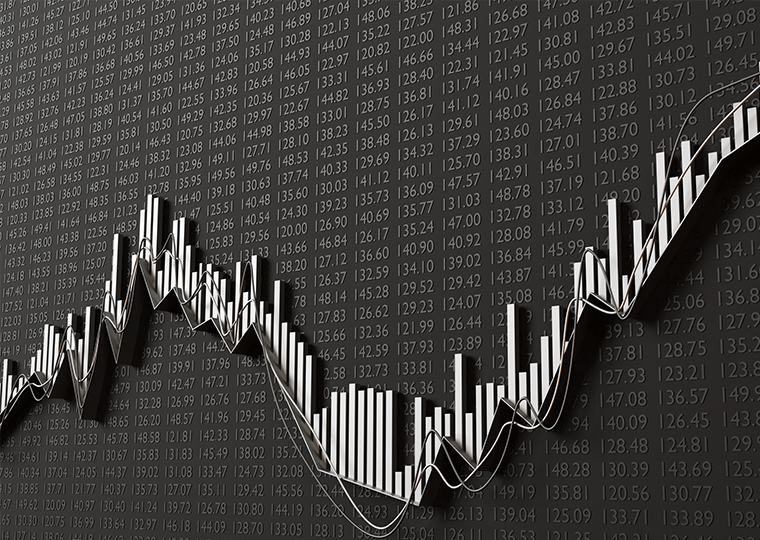They don’t trade at an absolute equal to intrinsic value, despite their image as the world’s investment bedrock
The roughly $21 trillion of U.S. Treasury securities currently outstanding share a unique characteristic: Unlike, say, a bond issued by an energy company or a share of a tech stock, they are backed by the full faith and credit of the U.S. government.
Because of that backing, Treasury securities are considered safe and highly liquid assets, two qualities valued by investors, who use Treasuries in a range of financial market transactions and investment strategies.
Their image as a safe haven asset, a bedrock store of value, and a highly liquid asset even in times of crisis also makes them a benchmark by which other fixed-income products can be priced. Many corporate bonds, for example, are priced relative to a Treasury security of the same duration: A bond’s yield is typically calculated as its percentage yield minus the yield on the Treasury security with the same maturity. That status as the benchmark also makes it easy to assume Treasuries remain fixed in value relative to the vagaries of the market and other forces. All of these characteristics lead to the widely accepted assumption that Treasury securities trade at a premium to their intrinsic value, known as the “convenience yield” or Treasury “richness.”
But contrary to popular belief, these important qualities don’t necessarily mean investors will always pay a premium for Treasuries. In a working paper published by the National Bureau of Economic Research, the University of Delaware’s Matthias Fleckenstein and UCLA Anderson’s Francis A. Longstaff build a model to examine historical price data for Treasury securities, in order to estimate whether, and under what circumstances, Treasuries trade at a premium or at a discount to their fair value.
Examining Whether Treasuries Trade at a Discount to Their Value
“Many Treasuries have repeatedly traded at significant discounts to their intrinsic fair values for extended periods during the past 25 years,” the authors conclude. So why are Treasury securities seen as “rich”? Treasuries do trade at a premium relative to other fixed-income securities. The authors set out to determine whether the premium holds on an absolute basis.
They do this by identifying the fair value of a range of Treasury securities of different maturities based on the term structure of “swaps tied to the overnight repo rate,” the interest rate at which banks borrow or lend to each other, which effectively functions as a risk-free benchmark rate. They then build a risk-free discounting curve for different maturities. With this curve in hand, they can then estimate how “rich” or “cheap” Treasury securities are by comparing the market price of a given security with its intrinsic fair value (which is defined simply as the sum of the present value of its discounted cash flows.) Their data set uses daily repo swap rates for one-, three-, and six-month, and one-, two-, three-, five-, seven-, 10-, 15-, 20-, and 30-year maturities for the period between January 1997 and October 2020.
The results are grouped into separate categories: Treasury bills (which are defined as having maturities of a year or less), and Treasury notes and bonds, which are categorized according to their remaining maturities of less than a year, and maturities between one to five years, five to 10 years, 10 to 20 years, and 20 to 30 years.
Across all six maturity categories, they find, the average value of premia is positive, indicating that on average, Treasury securities are indeed rich — from an average value of 25 basis points for Treasury bills to 1.75 basis points for Treasury bonds in the 20 to 30 year category. The highest average of any notes or bonds is for the five- to 10-year category, at 17.03 basis points.
However, in each category at some point in time, the premium goes negative. Furthermore, they find, “negative values for the premia occur frequently and can persist for extended periods of time.”
Even more surprisingly, Treasury securities do not “richen” when one might expect, such as during market panics that lead to a “flight to quality.” For example, during the financial crisis, the average premium for all six categories fell significantly immediately after Lehman Brothers defaulted in September 2008.
Multiple Factors Influence Treasury Richness
What’s more, since 2015, longer-term Treasury notes and bonds have been persistently cheap. “These results pose challenges to traditional views and beliefs about the nature and source of the premia in Treasury securities,” the authors write.
They note that monthly changes in the average premiums are not highly correlated among the different maturity categories, which suggests that Treasury richness is influenced by more than one factor. Using their data on the absolute value of Treasury securities, the authors go on to test several of the reigning theories about Treasury pricing against a range of variables that stand in for factors that could influence the price of these securities.
Longstaff and Fleckenstein’s results support several theoretical models for the valuation of money-like safe assets (other theories, such as those that focus on debt supply or international demand for Treasuries, receive less support from the data). For example, they find that the convenience yield associated with safe assets is a function of the opportunity cost of holding money, which is represented in their model by changes in the federal funds rate (the fed funds rate is a target interest rate set by the Federal Open Market Committee that is used by banks in overnight lending transactions, and which ripples out to the broader consumer economy by influencing short-term interest rates, mortgage rates and other lending rates.)
When the fed funds rate goes up, investors flock to Treasury securities (which are still seen as being money-like due to their perceived safety) to capture some of that yield, rather than keeping their money in cash, which does not accrue any interest. “A higher short-term riskless rate increases the opportunity cost of holding money, thereby making interest-bearing Treasury securities relatively more attractive as safe alternatives to money,” the authors write.
Another key factor is investor demand for liquidity, as measured by investors’ perceptions of the risk of extreme economic events. The researchers test several types of events using different financial instruments and economic indicators: returns on asset classes such as gold and housing, which represent hedges against extreme inflation scenarios, and macroeconomic measures such as changes in the unemployment rate and the Michigan consumer sentiment index. All of these factors are strongly related to Treasury richness, consistent with the hypothesis that investors place a premium on liquidity during risky market and economic periods in which hedging vehicles are important and other assets may be less liquid.
Could The Market’s Confidence in Treasuries Be Flagging?
Finally, they test the role of liquidity further by looking at how premiums change as Treasury securities cross certain maturity thresholds. Specifically, they study what happens to the premium 20 days before and after the “event” in which a Treasury note or bond crosses a given threshold, looking at the behavior of the premium at the two-, three-, four-, five-, seven-, and 10-year maturities, since those thresholds render them eligible or ineligible for large fixed-income mutual funds that focus on specific time horizons. They find “there is a significant decline in the market-adjusted premium prior to crossing the maturity threshold for each of the different maturities” studied, which backs up the liquidity/illiquidity thesis, since crossing a certain threshold affects the number and types of large-scale investors that can hold that security.
Their findings have implications for policy, debt management and for the role of Treasury securities as a safe haven asset in financial markets. The finding that the yield on long-term Treasury debt has consistently been 30 to 50 basis points above its fair value since 2015 suggests that the U.S. government may be paying unnecessarily high borrowing costs on its debt by not strategically issuing debt of the more highly liquid maturities. And the cheapening of Treasury securities relative to their intrinsic value since 2015 “suggests a major shift in the confidence” that market participants place in Treasuries.
This finding comes at a time when some market observers fear that Treasuries are due for a future devaluation. This could be caused by factors ranging from the rapidly increasing U.S. government debt to the possibility that China’s central bank disgorges some of its over $1 trillion in Treasury holdings into global markets. But the finding that Treasuries are already significantly discounted relative to their intrinsic value possibly suggests perhaps the shift in attitudes toward these important benchmark securities is already underway.
“This recent trend raises important questions about the ongoing safe-asset status of Treasury securities as well as the future of the dollar as a reserve currency,” the authors write.
Featured Faculty
-
Francis Longstaff
Distinguished Professor of Finance; Allstate Chair in Insurance and Finance, Area Chair
About the Research
Fleckenstein, M., Longstaff, Francis A. (2021). Treasury Richness. doi:10.3386/w29081






